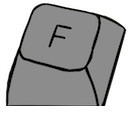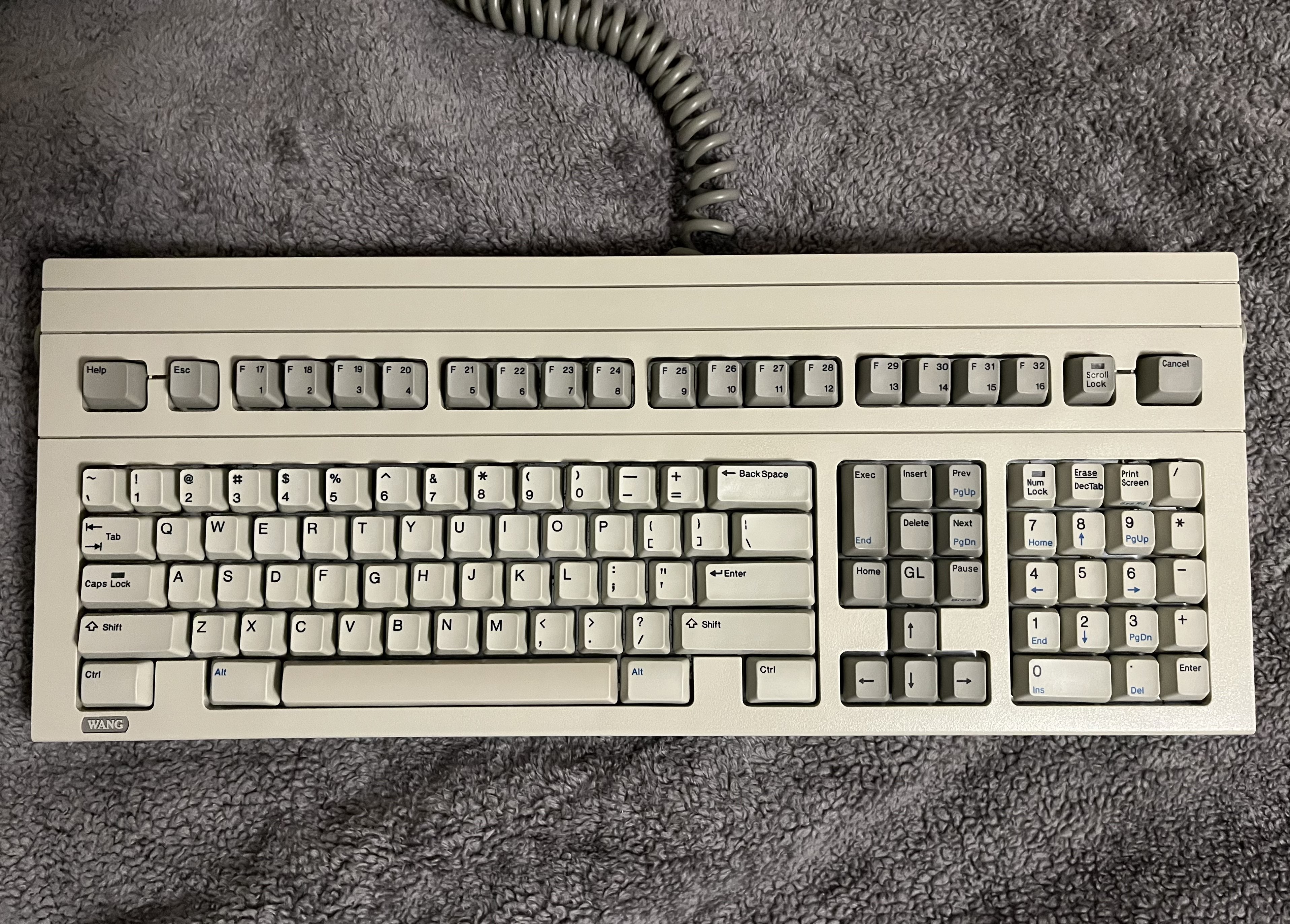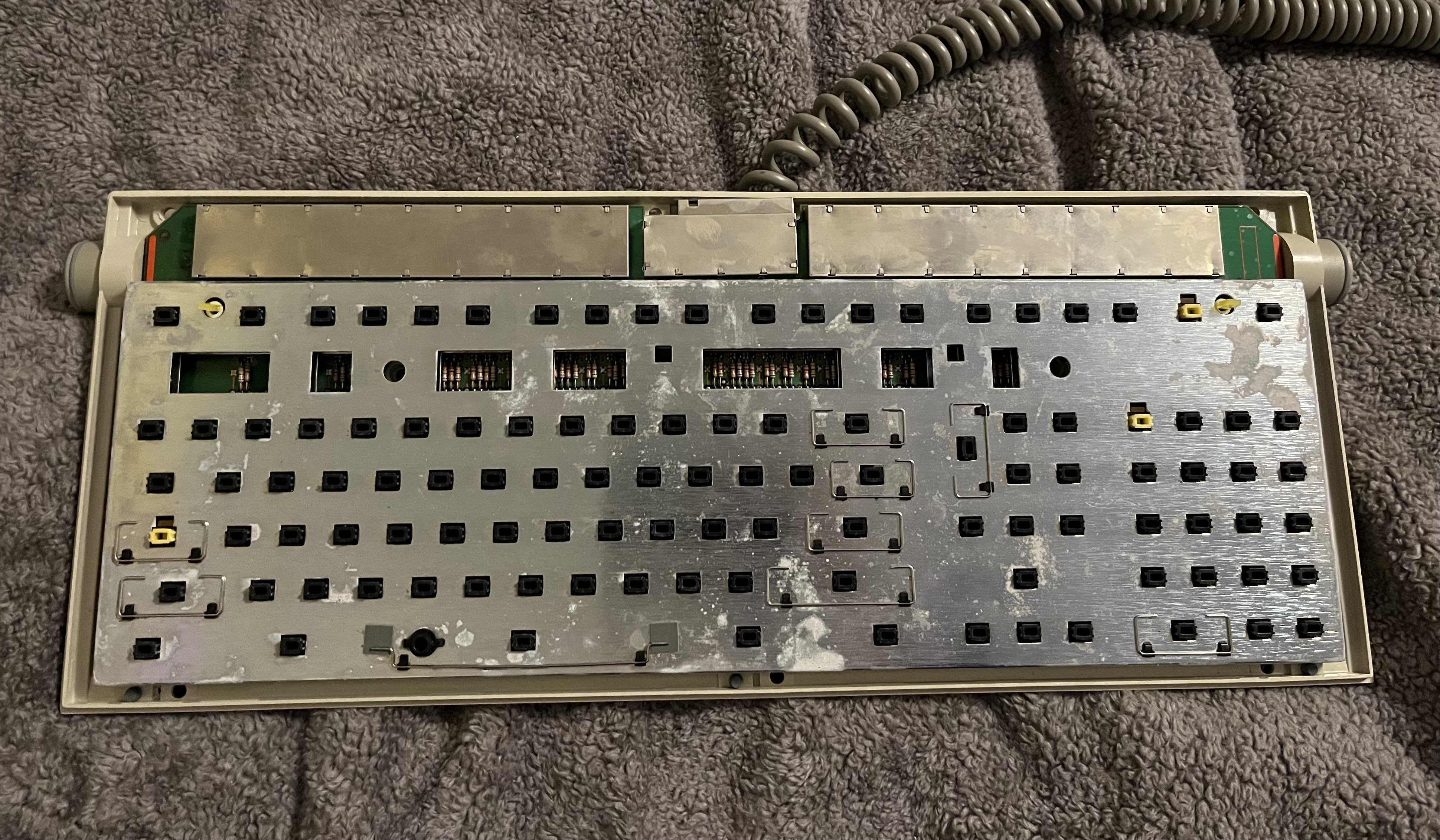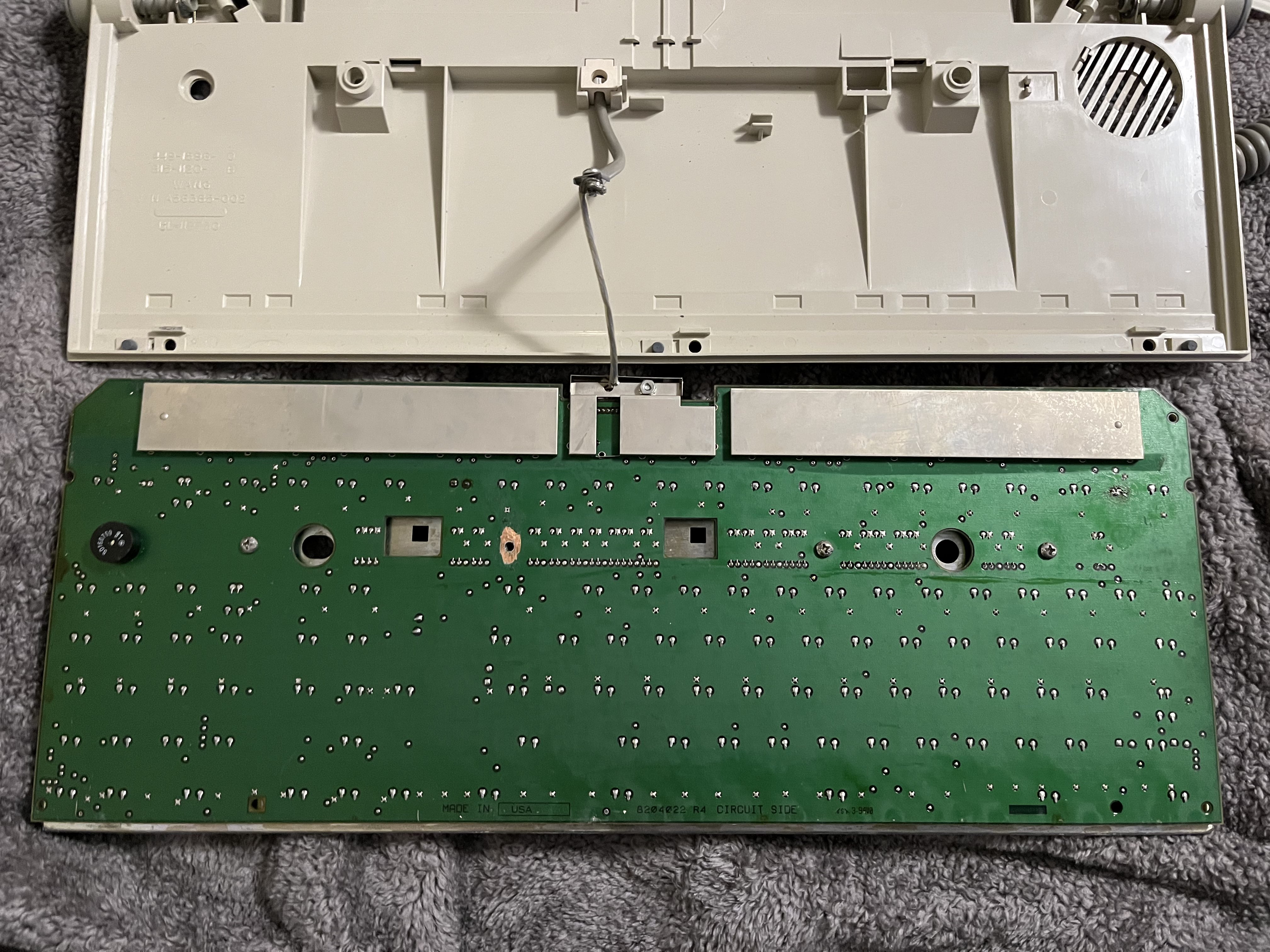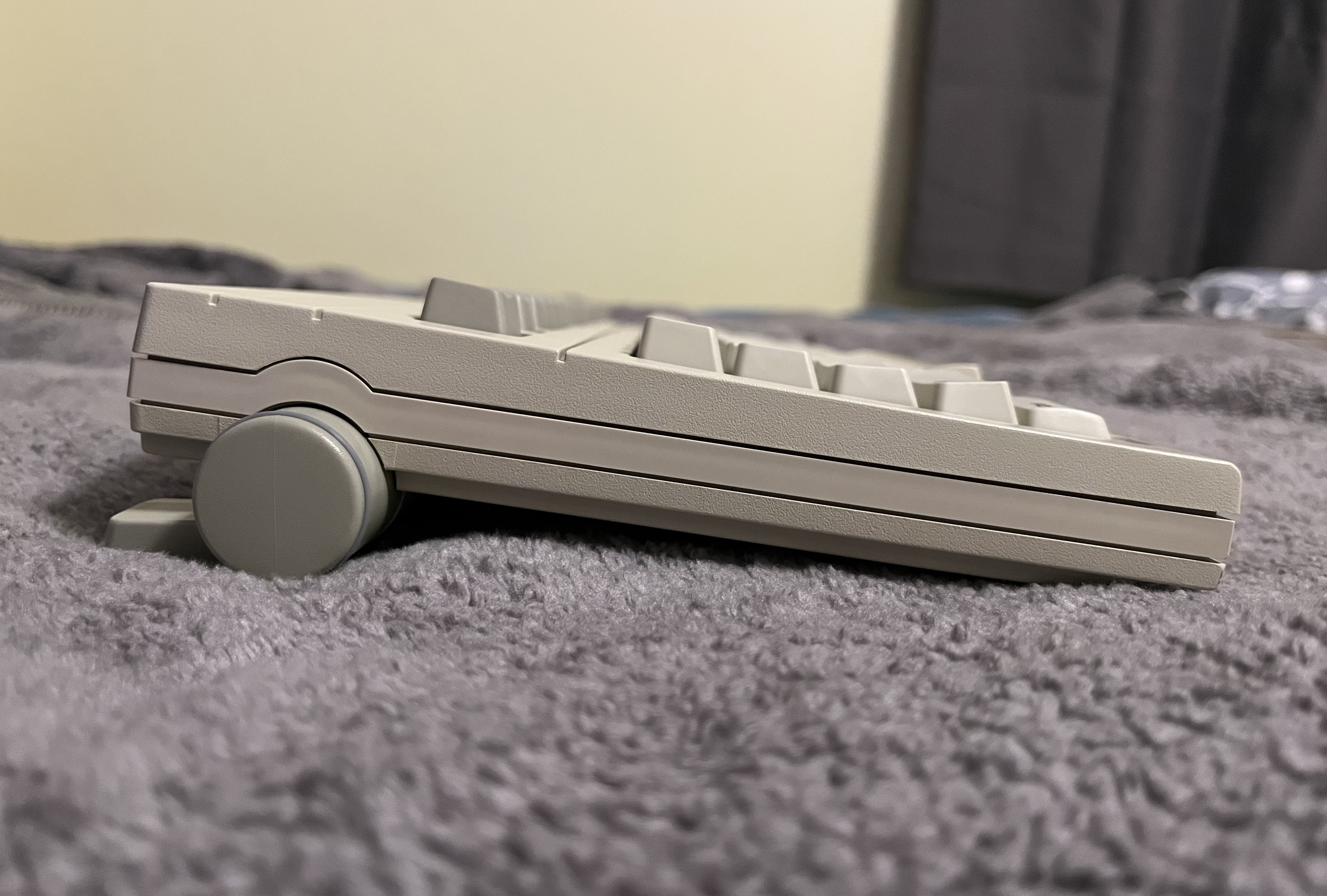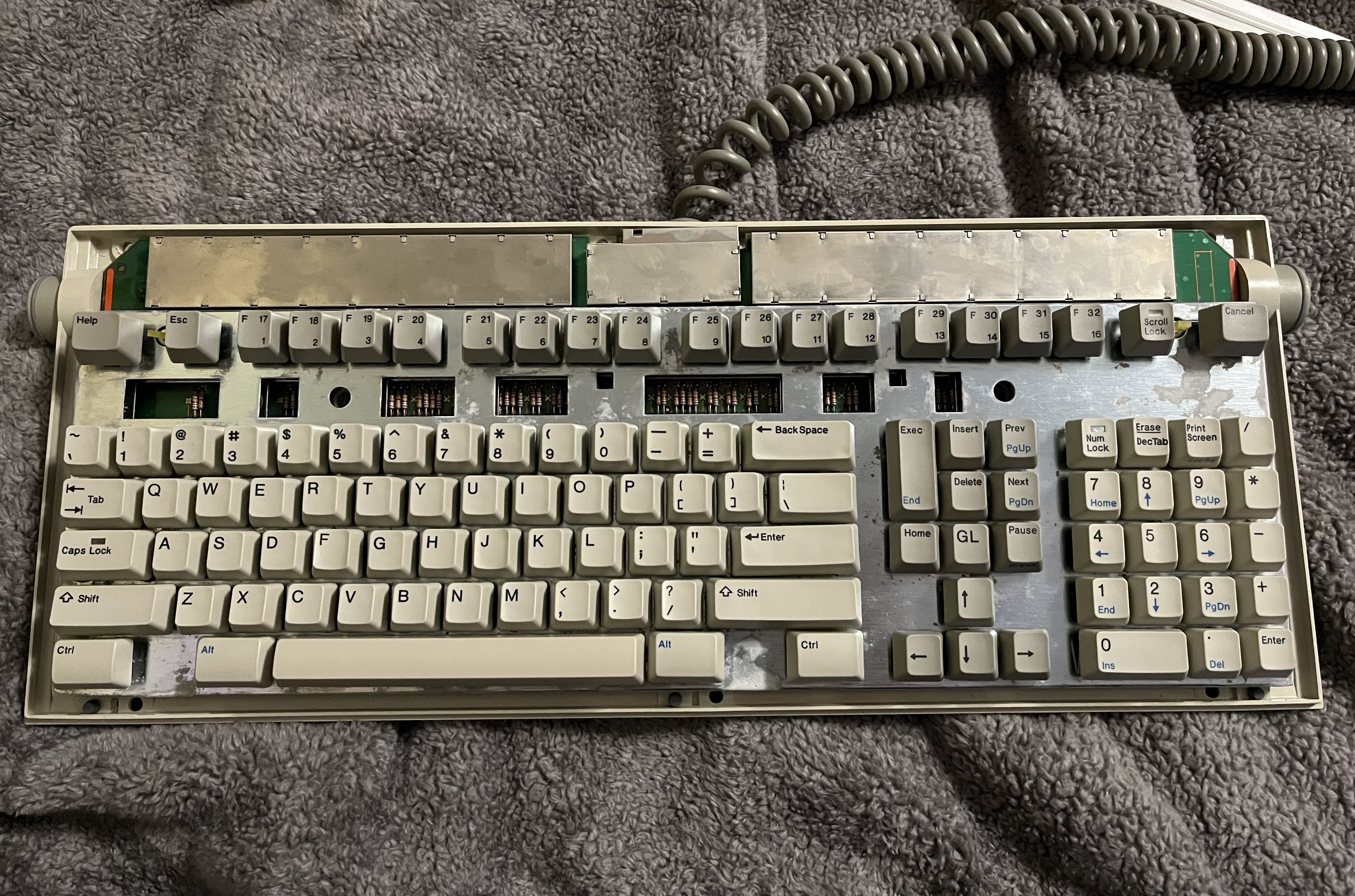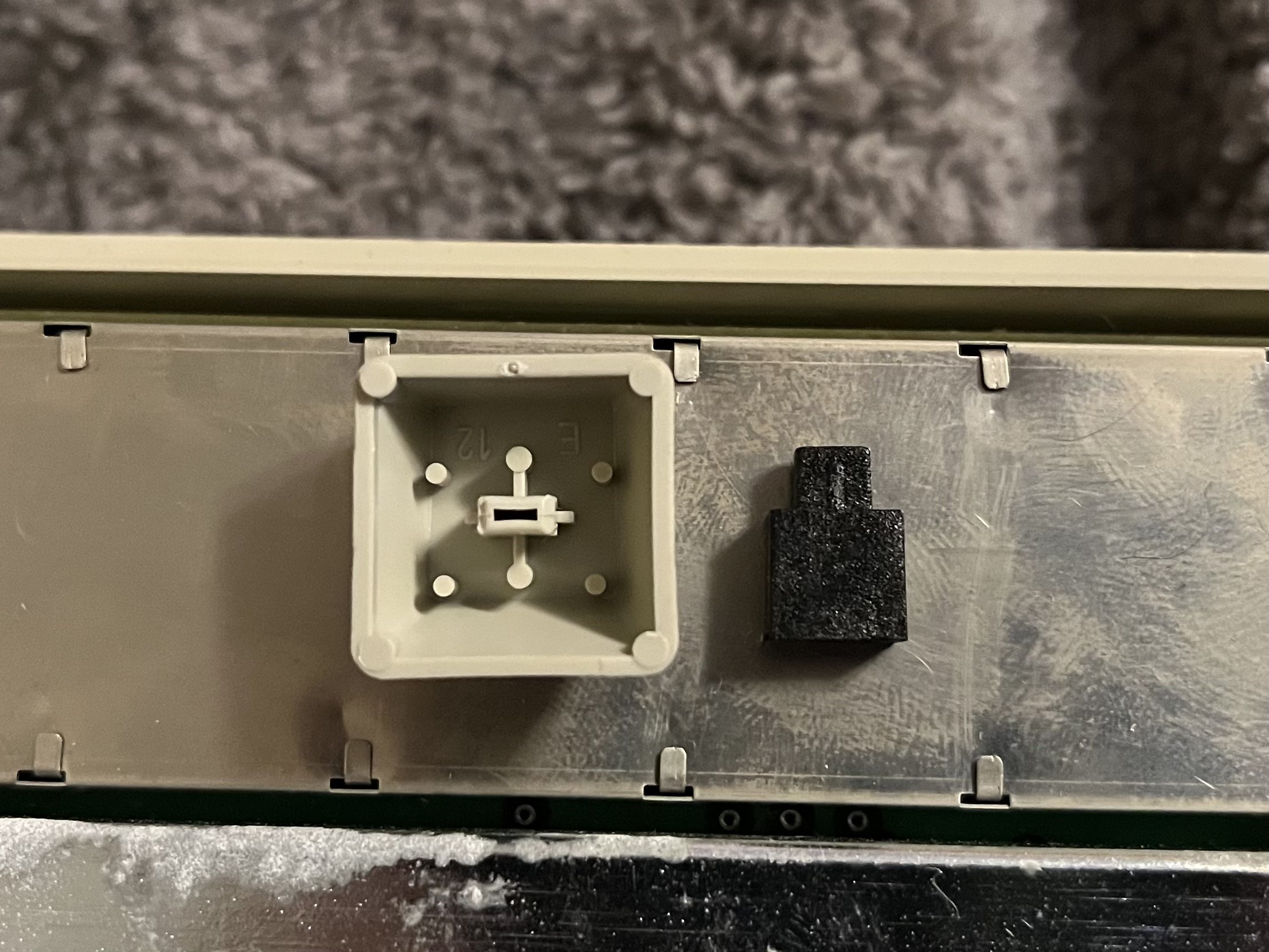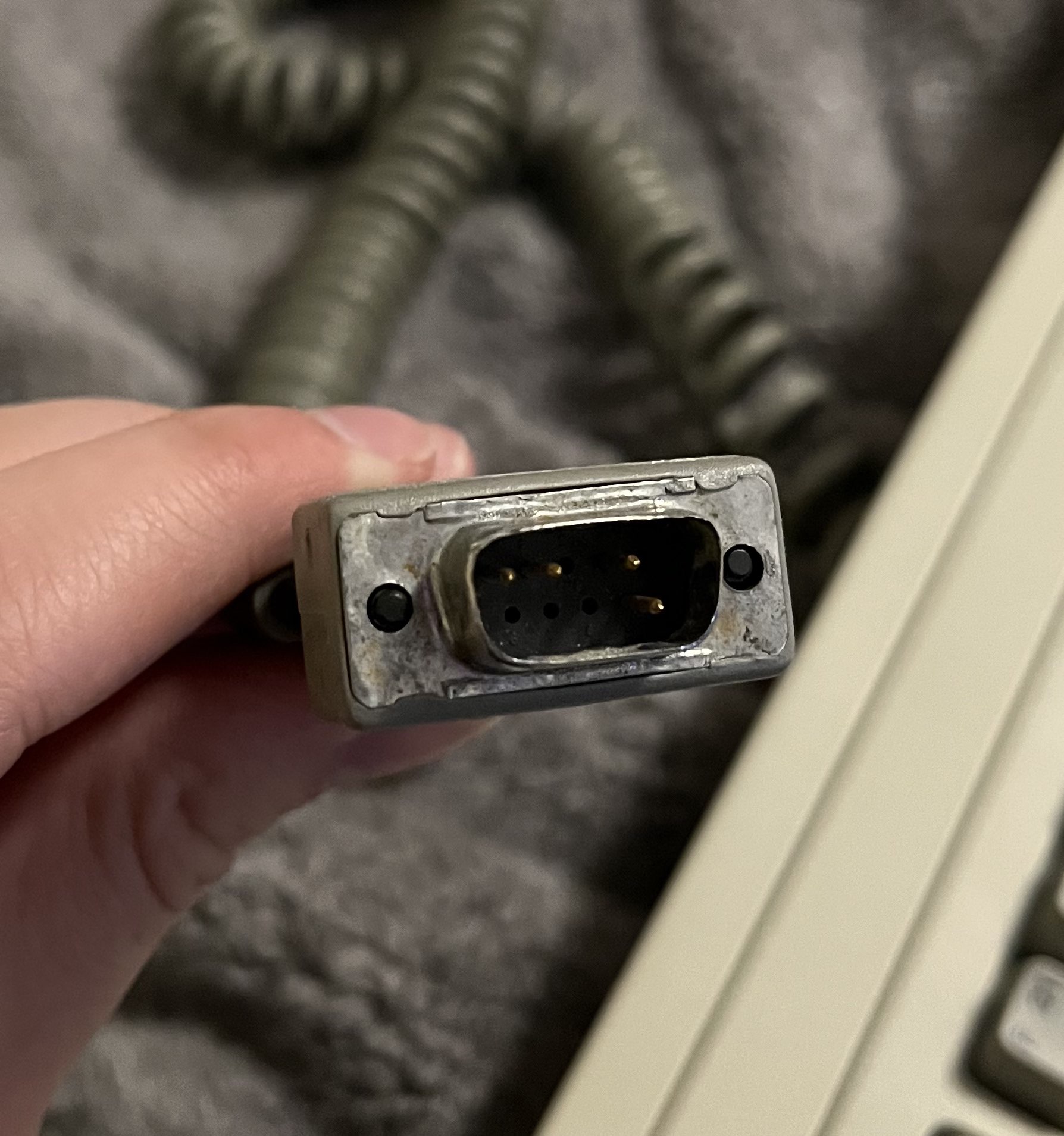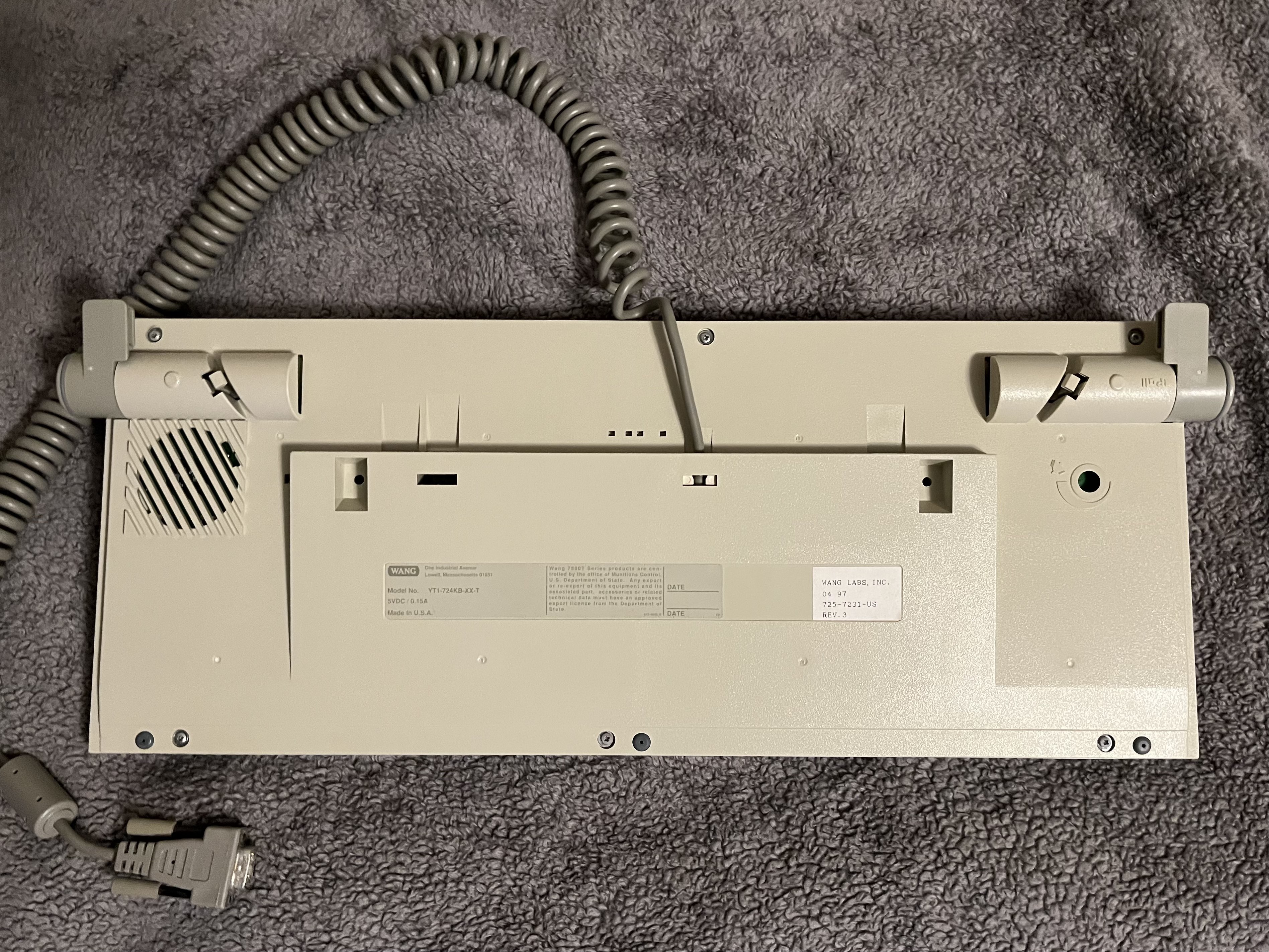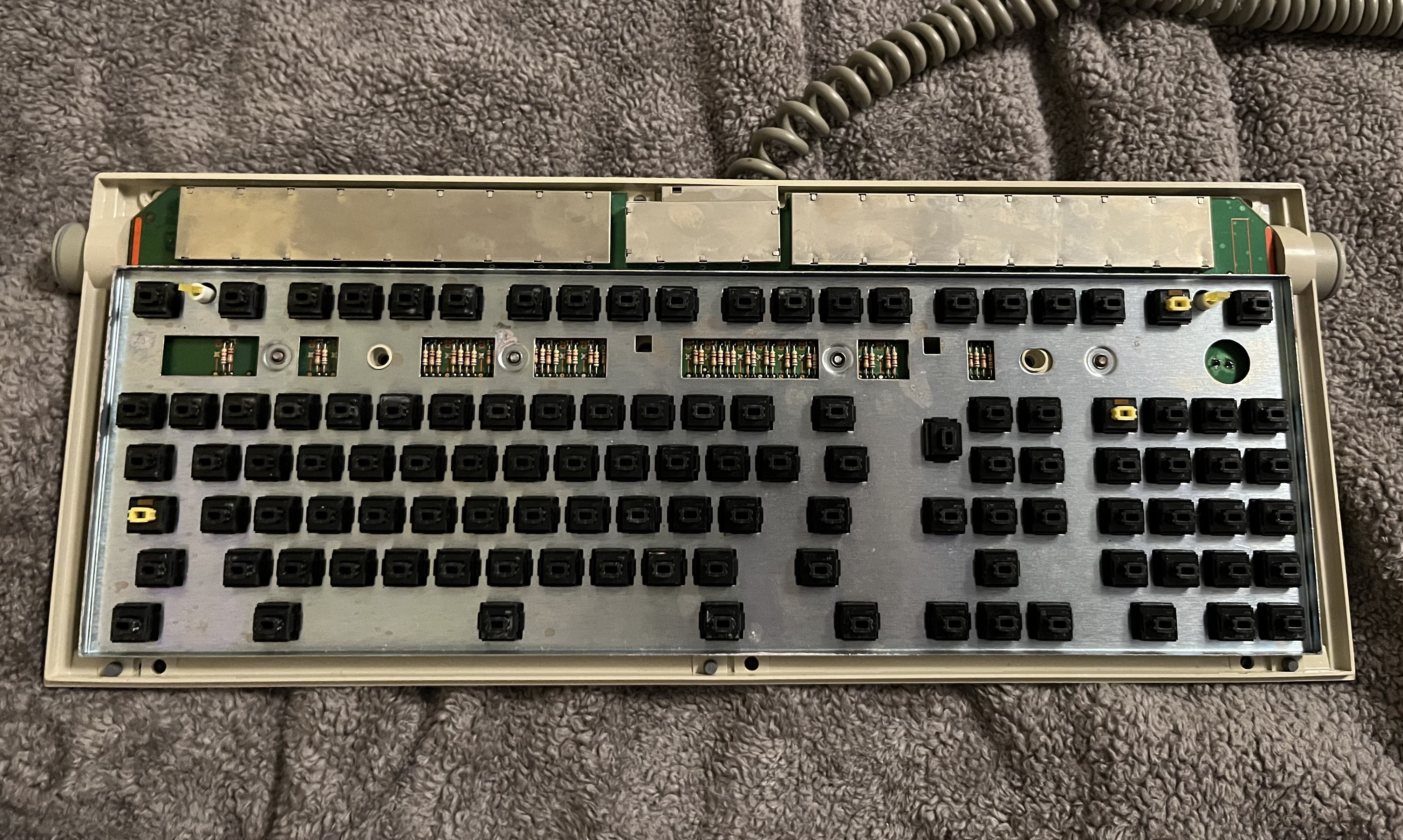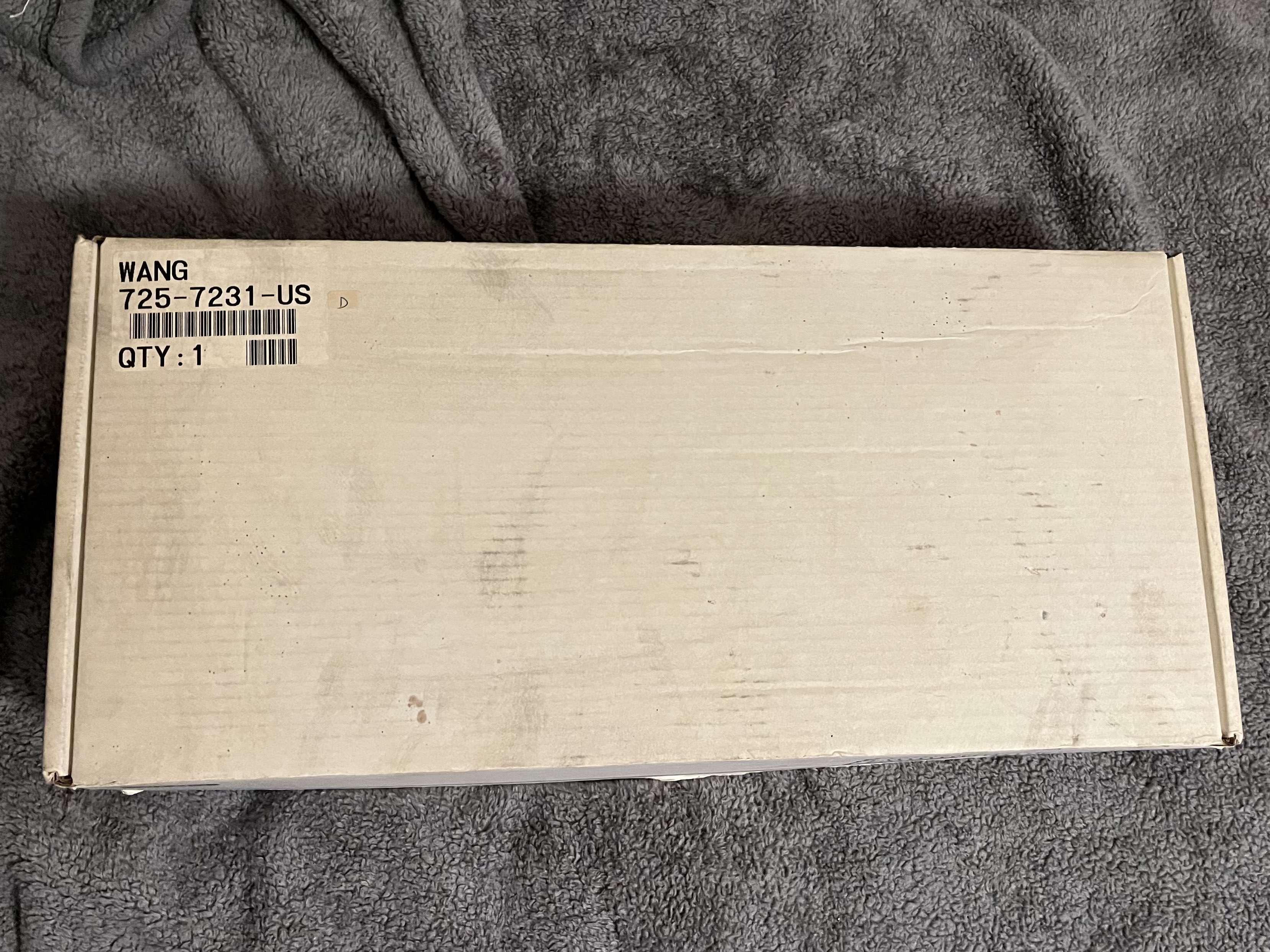Wang 725-7231-US
| Wang 725-7231-US | |
 |
|
| Manufacturer | Wang |
| Switch | Alps SKCM Black (Bamboo) |
| Keycaps | PBT Dyesub |
| Protocol | DB-9 Unknown Protocol |
| Years of Production | Unknown - 1997 |
The Wang 725-7231-US is a modified version of the Wang 725-3770 keyboard. It was likely part of the United States National Security Agency (NSA) Tempest Program. Several other Tempest modified versions of keyboards have been spotted, including the Zenith Z-150, Apple M0115, several IBM Model F keyboards, and even another Wang. Tempest keyboards have enhanced electromagnetic shielding to prevent spying, and were used in sensitive applications within the United States government. While superficially similar to the standard Wang 725-3770, this keyboard has a metal plate over the top of the switches along with keycap risers, a shielded DB-9 connector, and a unique PCB that does not appear to have been made by Alps Electric.
Use
It is unknown what computer system the Wang 725-7231-US was meant to interface with, as only one of these keyboards has been documented so far. The back label mentions the Wang 7500T Series, which can also be found on another Tempest Wang.
Case
From above, the keyboard looks the same as the standard 725-3770. However, the differences become apparent when looking at the side profile of the keyboard. It has an additional plastic piece between the top and bottom shell that is loosely connected to the top shell. This is needed to account for the additional keycap height and top plate. Internally the keyboard lacks the distinctive speaker of the normal model, and has a different internal cable system. The keyboard uses the same six screws as the normal Wang, and appears to have the same top and bottom shell as well. This makes sense as it would be far more cost effective to modify the existing 725-3770 shell with additional pieces compared to designing a new mold. The keyboard also uses the same adjustable feet mechanism.
Plates
Unique to Tempest keyboards, the Wang 725-7231-US has two plates. They are both unpainted steel, and form a shell around the switches. The bottom plate acts as a normal plate, holding in the switches, and the top plate covers them, allowing the switch stems to poke through. This multi-plate system is an electromagnetic shielding feature.
PCB
The keyboard uses a completely different PCB to the standard Wang keyboard. Every single switch pin is bent, which is not a practice employed on most Alps keyboards. The markings and unique construction point to the PCB not being designed by Alps, perhaps being designed by Wang themselves or outsourced to another company. The buzzer is attached to the bottom of the PCB, and there is a ground connector that appears to be scratched off by hand. All of the PCB components are protected by metal shields that are not accessible. The cable uses a DB-9 connector with 4 pins and extra shielding.
Switches & Keycaps
The only known model uses Alps SKCM Black (Bamboo) switches along with two Alps SKCL Yellow LED switches. The keycaps are PBT dyesubs, similar to the ones found on the 725-3770, except with bolder font and a darker shade of blue on the sub-legends. They have removable black plastic risers attached between the keycaps and the switches. This is required so that the switches can depress with the top plate in use.
Label
While little is known about the origin and use of the Wang 725-7231-US, the back label helps to shed some light on it. The keyboard's model number is YT1-724KB-XX-T. Searching the internet for this model number leads to the website of a NATO supplier who labels the part as “Keyboard Data Entry.” The right side of the label reads: “Wang 7500T Series Products are controlled by the office of Munitions Control, U.S. Department of State.” There is no FCC ID because this was not intended as a consumer product. The last part of the label is dated 04 97, likely meaning April 1997. This is one of the latest Alps Wang keyboards discovered. It also shows that this keyboard is revision 3, which might imply that there are earlier Tempest Wang models out there.
